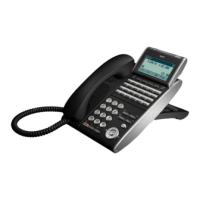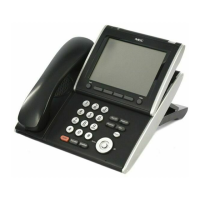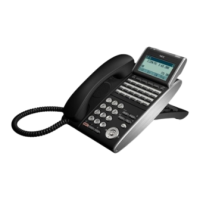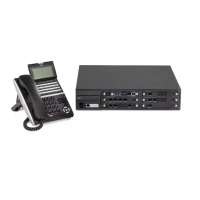IP Single Line Terminal (SIP)
Description
SIP (Session Initiation Protocol) is used for Voice over Internet Protocol. It is defined by the IETF
(Internet Engineering Task Force) RFC3261. Other RFC designations, such as RFC3842, refer to a
later implementation of SIP and may be supported by the SL1000/SL1100. Commonly called SIP
Station, this feature is used for IP Stations using SIP.
Maximum capacity of 16 SIP stations are supported.
SIP analyzes requests from clients and retrieves responses from servers, then sets call parameters at
either end of the communication, handles call transfer, and terminates. Typically, such features,
including but not limited to Voice over IP services, are available from an SIP service provider.
The VoIPDB application can support up to 16 TDM Talk paths. This total may be shared among SIP
Stations or SIP Trunks. This is a required component of SIP implementation in the SL1000/SL1100.
The SL1000/SL1100 CPU contains a regular TCP/RTP/IP stack that can handle real-time media,
support industry standard SIP (RFC 3261) communication on the WAN side, and interface with the
VoIPDB.
SIP IP Stations use the VoIPDB. The VoIPDB controls and interprets RTP messaging from the SIP IP
Terminal to the SL1000/SL1100 CPU.
The VoIPDB supports only those codecs that are considered to provide toll-quality equivalent speech
path. The following voice compression methods are supported for the IP Station SIP feature:
• G.711 μ-Law - Highest Bandwidth
• G.722 - Wideband
• G.729 - Mid-Range Bandwidth
For the minimum bandwidth requirements for each voice call refer to Table 1-40 Minimum Bandwidth
Requirements on page 1-407. This includes all the overhead of VoIP communication, including
signaling).
Table 1-40 Minimum Bandwidth Requirements
Codec Transmit Da-
ta Rate
Receive Data
Rate
Time Be-
tween Pack-
ets
Packetization
Delay
Default Jitter
Buffer Delay
Theoretical
Maximum
MOS
G.711 μ-Law 90 Kbps 90 Kbps
20ms
*1
1.5 ms 2 datagrams
(40ms)
4.4
G.722 64 Kbps 64 Kbps
20ms
*1
1.0 ms 2 datagrams
(40ms)
4.5
G.729 34 Kbps 34 Kbps
20ms
*1
15.0 ms 2 datagrams
(40ms)
4.07
*1. When an IP Soft Phone is connected, set Time Between Packets to 100ms.
• The VoIPDB is an end-point on the IP network from the network administration perspective.
• The CPU uses SIP Protocol to provide telephony services between remote stations through the IP
Network. This is an IETF/ITU standards-based protocol.
• Speech-connection audio quality depends greatly on the available bandwidth between the stations
in the data network. Because Internet is an uncontrolled data network compared to an Intranet,
using this application in Intranet WAN environment with known (or controlled and assured) Quality
of Service (QoS) is highly recommended.
ISSUE 2.0
SL1000/SL1100
Features and Specifications Manual 1-407
I

